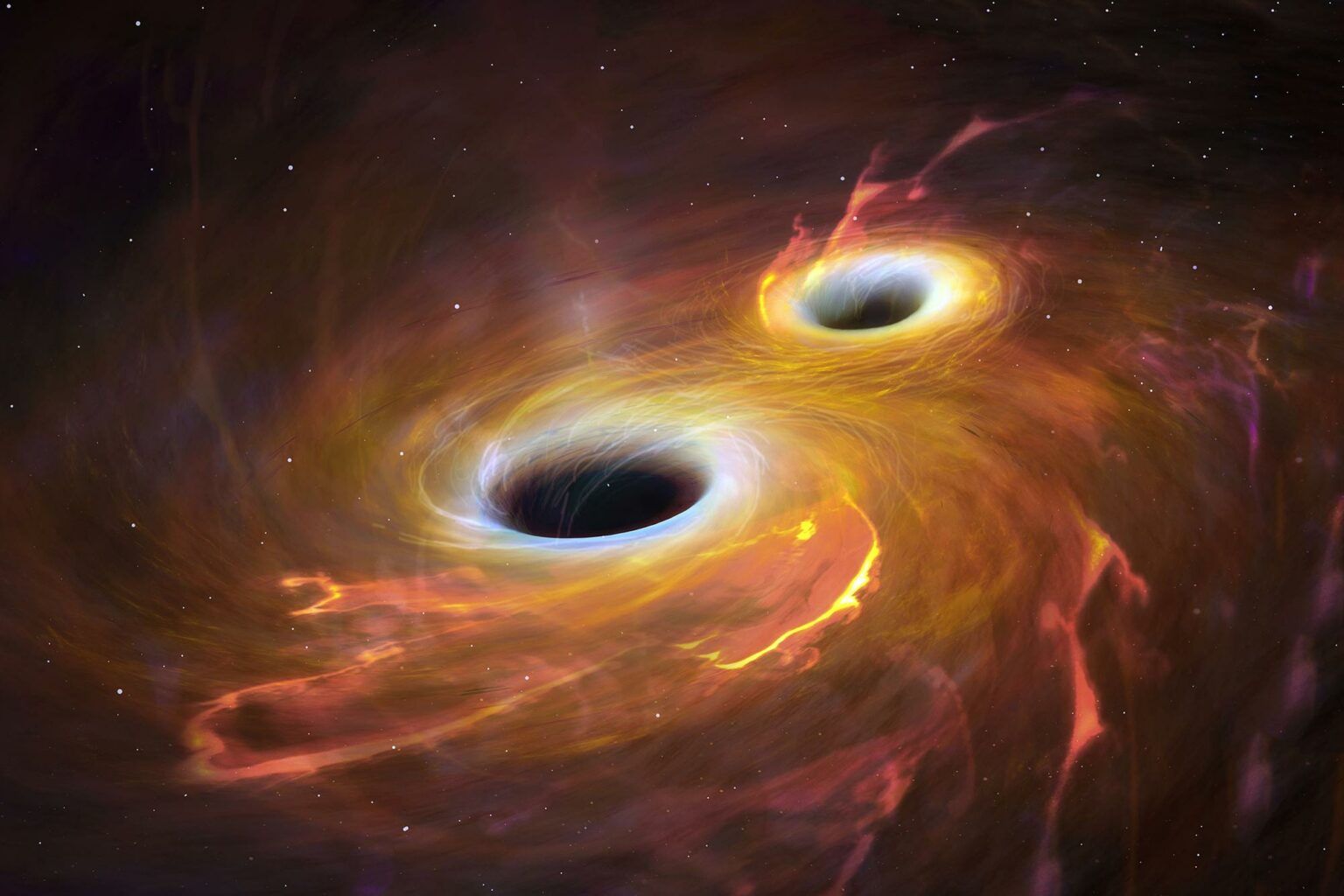Using gravitational wave detectors, scientists have studied a pair of interacting black holes. One of them has distorted space so much that its orbit precedes at breakneck speed. Its orientation changes several times per second.

Precession of black holes
Scientists from Cardiff University have studied a pair of black holes called GW200129. The waves are so close to each other that they strongly bend space and emit gravitational waves. It was their observation that allowed scientists to learn something interesting about the larger of the objects.
It turns out that the orbit of a black hole with a mass 40 times greater than the solar one is undergoing precession. In classical mechanics, this phenomenon is a circle that describes the axis of a rotating object. Einstein’s theory of relativity suggests a slightly different mechanism of this phenomenon, associated with the distortion of space and gravitational waves.
The orbit of a black hole, which is in close gravitational interaction, should oscillate back and forth at high speed. And observations of GW200129 show that this is exactly what is happening in it. The orbit of a black hole precesses at a rate of several times per second.
How rare is this phenomenon?
At the same time, it should be noted that although the theory of relativity assumes this type of precession, models based on it say that it should be a fairly rare event. Only one in a thousand black holes should fluctuate in this way.
In the seven years that have passed since the discovery of gravitational waves of a large statistical sample, they have not been collected. It is too difficult to detect these events. This is only possible on special gravity detectors such as LIGO.
Therefore, so far the most significant case of relativistic precession has been observed during the merger of two neutron stars. But for that pair, the fluctuation period was several weeks. In GW200129, it is about 10 thousand times smaller.
Now scientists are going to collect more statistical data about black holes. After all, it is unclear whether they were so lucky with GW200129, or in fact precession is much more common than previously thought. If this is the case, then it will be necessary to view the current physical models.
According to phys.org
Follow us on Twitter to get the most interesting space news in time
https://twitter.com/ust_magazine

